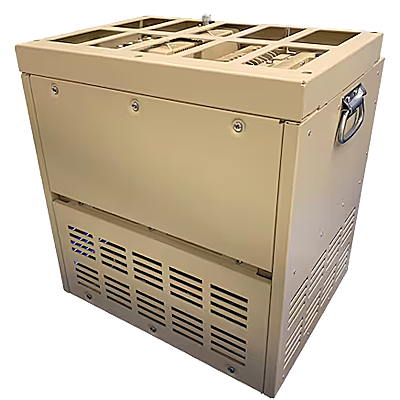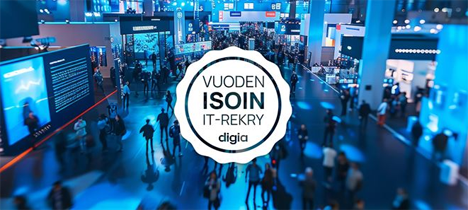
DECT NR+ täyttää merkittävän aukon langattomassa yhteydenpidossa tarjoamalla luotettavan ja standardoidun viestintäprotokollan, joka yhdistää ainutlaatuisella tavalla alhaisen viiveen, pitkän kantaman, korkeat tiedonsiirtonopeudet, ei käytön aikarajoituksia ja lähes maailmanlaajuisen taajuuskattavuuden—kaikki tämä edulliseen hintaan. Nordic Semiconductor hyödyntää olemassa olevaa vähävirtaista nRF91-sarjan teknologiaansa tarjotakseen saumattoman ja erittäin integroidun DECT NR+ -ratkaisun.
DECT (Digital Enhanced Cordless Telecommunications) esiteltiin vuonna 1992 ja otettiin käyttöön vuotta myöhemmin. DECT tunnetaan tällä hetkellä ensisijaisesti langattoman puhelinteknologian ja älykotilaitteiden standardina, ja sitä valvoo ETSI (European Telecommunications Standards Institute), itsenäinen ja voittoa tavoittelematon organisaatio, joka keskittyy tieto- ja viestintäteknologioiden standardointiin. Taajuus on nyt herättänyt kiinnostusta myös täysin erilaisiin sovelluksiin.
Euroopasta lähtöisin oleva DECT on noussut maailman käytetyimmäksi standardiksi langattomille puhelimille ja korvannut vanhemmat analogiset CT1- ja CT2-taajuuksilla toimineet mallit, joiden käyttö on nykyisin kielletty loppukäyttäjiltä. Lisäksi DECT on otettu käyttöön myös Euroopan ulkopuolella, ja erilaisia versioita siitä on toteutettu Australiassa, suuressa osassa Aasiaa, Etelä-Amerikassa ja viime aikoina myös Pohjois-Amerikassa.
DECT kehitettiin alun perin nopeaan siirtymiseen verkottuneiden tukiasemien välillä. Langattomien puhelimien lisäksi, jotka kommunikoivat lankapuhelinverkon tukiaseman kanssa, lämmitystermostaatit, pistorasiat ja valokatkaisijat voivat muodostaa langattoman yhteyden tiettyihin reitittimiin ULE:n ja HAN-FUN-standardien ansiosta, jotka perustuvat DECT-teknologiaan.
Vuosien mittaan DECT-teknologiaa on kehitetty edelleen, ja siihen on lisätty useita uusia muunnelmia ja audiokoodekkeja. Lähes 30 vuotta myöhemmin Kansainvälinen televiestintäliitto (ITU) hyväksyi DECT-2020 NR -version IMT-2020 (= 5G) -standardiksi. Tätä uutta protokollaa kutsutaan nyt nimellä NR+ (New Radio Plus) DECT Forum -organisaatiossa.
Nordic Semiconductor on tällä hetkellä markkinoiden ainoa toimittaja, joka tukee DECT NR+ -protokollaa ja tarjoaa jo omia DECT NR+ -yhteensopivia moduulejaan. Mesh-ohjelmisto saadaan suomalaiselta Wirepas-yritykseltä, ja ääniohjelmisto Lynqiltä.
Nordic Semiconductor tarjoaa tällä hetkellä kolme DECT NR+ -yhteensopivaa tuotetta nRF91-sarjassa: nRF9161 SiP, nRF9151 SiP ja nRF9131 mini SiP.
Tämä Rutronikin toimittama artikkeli ilmestyi uusimmassa ETNdigi-lehdessä, jonka löydät täältä. Tässä artikkeli englanniksi kokonaisuudessaan.
DECT NR+ IS THE FIRST NON-CELLULAR 5G STANDARD
DECT NR+ fills a significant gap in wireless connectivity by providing a reliable, standardized communication protocol with an unparalleled combination of low latency, long range, high data rates, no duty cycle limitations, and near-global frequency coverage—all at a low cost. Nordic Semiconductor is leveraging its existing low-power nRF91 Series technology to offer a seamless and highly integrated DECT NR+ solution.
DECT (Digital Enhanced Cordless Telecommunications) was unveiled in 1992 and introduced a year later. DECT is currently recognized primarily as a standard for cordless telephony and smart home devices and is overseen by ETSI (European Telecommunications Standards Institute), an independent, non-profit organization dedicated to standardization in the field of information and communication technologies. The frequency is now also becoming interesting for very different applications.
DECT, which originated in Europe, has become the most widely used standard for cordless phones, replacing older analog ones that operated on the CT1 and CT2 bands, which are now prohibited for end users. Further, DECT has been introduced outside of Europe, with various versions implemented in Australia, much of Asia, South America, and more recently in North America.
DECT was originally developed for fast roaming between networked base stations. Besides cordless phones that communicate with a landline base station, heating valves, sockets, or light switches can also establish a wireless connection to certain routers thanks to ULE with HAN-FUN standards based on DECT technology.
Over the years, DECT has been further developed with several new variants and new audio codecs. Nearly 30 years later, DECT-2020 NR was approved by the International Telecommunication Union (ITU) for the IMT-2020 (= 5G) standard. The new protocol is now referred to as NR+ (New Radio Plus) by the DECT Forum.
FIRST DECT NR+ PRODUCTS AVAILABLE
Nordic Semiconductor is currently the only supplier on the market that supports the DECT NR+ protocol and already offers its own DECT NR+ compatible modules. The mesh software is obtained from the Finnish third-party provider Wirepas and the audio software from Lynq.
Nordic Semiconductor currently offers three DECT NR+-capable products in the nRF91 series: nRF9161 SiP, nRF9151 SiP, and nRF9131 mini SiP.
nRF9151 is a highly integrated and compact system-in-package (SiP) solution specifically designed for cellular IoT and DECT NR+ applications. Through the use of power-saving LTE technology, advanced processing capabilities, and robust security features, nRF9151 offers high performance and versatility and supports 3GPP Release 14 LTE-M/NB-IoT and DECT NR+.
All three modules are equipped with a powerful ARM Cortex-M33 processor, which manages processing of the communication protocol and the customer application and, therefore, does not require any additional microcontrollers in the end devices. To select the best possible and most energy-efficient communication for its application, all the modules support LTE-M, NB-IoT, and GNSS positioning in addition to DECT NR+.
All three variants are almost identical in terms of their functionality. However, minor differences between the modules do exist: Compared to its predecessor (nRF9161), nRF9151 has a 20 percent smaller footprint. It also supports a further power class 5 thanks to 20 dBm output power. In contrast, nRF9131 is better suited for high-volume cellular IoT applications that require individual certification, which can be somewhat costly for customers.
Alternatively, it is specifically designed for DECT NR+ applications, which are license-free and do not rely on cellular networks at all. Therefore, nRF9151 or nRF9161 is more likely to be used for a possible fallback scenario to cellular radio if an NR+ gateway is not within range. And by omitting the PMIC (power management IC), nRF9131 is much smaller than nRF9151.
NRF9151 IS THE ULTIMATE SIP
The nRF9151 sets a new standard for highly integrated and compact System-in-Package (SiP) solutions, specifically designed for cellular IoT and DECT NR+ applications. Leveraging low power LTE technology, advanced processing capabilities, and robust security features, the nRF9151 offers unparalleled performance and versatility, and supports 3GPP release 14 LTE-M/NB-IoT and DECT NR+. Compared to its predecessor (nRF9161), it boasts a significant footprint reduction of 20% and brings additional support for Power Class 5 20 dBm. The nRF9151 is used for applications such as Asset Tracking, Smart Metering, Smart City, Smart Agriculture , Predictive maintenance, Portable Medical Devices and Industry 4.0.
MAIN BENEFITS
- Enhanced Capabilities: The nRF9151 surpasses its predecessor with support for Power Class 5 20 dBm output power, complementing the existing Power Class 3 23 dBm, which provides great design flexibility as it eases the requirements for battery-powered products.
- Global Connectivity and Power Efficiency: The integrated modem of the nRF9151 enables global connectivity without regional limitations, and include new unique modem features for further power saving and ease of use.
- Unleashing the Potential of DECT NR+: Harness the capabilities of the DECT NR+ stack, enabling massive mesh applications that prioritize reliability, secure connections, long range, and scalability.










 Puettavien teknologioiden kehitys saa jälleen uutta vauhtia u-bloxin julkaistessa UBX-M10150-CC GNSS-sirun, joka yhdistää markkinoiden pienimmän koon ja erittäin alhaisen virrankulutuksen. Uutuus mahdollistaa paikannuksen vain 10 milliwatin teholla, mikä pidentää akunkestoa huomattavasti ja avaa uusia mahdollisuuksia kuluttajaystävällisempien laitteiden suunnitteluun.
Puettavien teknologioiden kehitys saa jälleen uutta vauhtia u-bloxin julkaistessa UBX-M10150-CC GNSS-sirun, joka yhdistää markkinoiden pienimmän koon ja erittäin alhaisen virrankulutuksen. Uutuus mahdollistaa paikannuksen vain 10 milliwatin teholla, mikä pidentää akunkestoa huomattavasti ja avaa uusia mahdollisuuksia kuluttajaystävällisempien laitteiden suunnitteluun.



 Nokia on julkaissut Nokia 5G Banshee Flex Radio -radion, joka on suunniteltu vastaamaan modernin sodankäynnin monimutkaisiin viestintätarpeisiin. Uusi mobiili laajakaistainen reunaverkko yhdistää huipputason 5G- ja LTE-teknologiat tuoden turvalliset, luotettavat ja joustavat viestintämahdollisuuksia taistelukentälle.
Nokia on julkaissut Nokia 5G Banshee Flex Radio -radion, joka on suunniteltu vastaamaan modernin sodankäynnin monimutkaisiin viestintätarpeisiin. Uusi mobiili laajakaistainen reunaverkko yhdistää huipputason 5G- ja LTE-teknologiat tuoden turvalliset, luotettavat ja joustavat viestintämahdollisuuksia taistelukentälle.
















 Pilvisiirtymien tahti on hidastunut, ja monet yritykset ovat jo saavuttaneet pilvestä saatavan kilpailuedun. Miten tämä vaikuttaa IT-palvelukumppaneiden rooliin ja prioriteetteihin tulevaisuudessa? TCS:n yritysarkkitehti Jukka-Pekka Ahonen kertoo omista näkemyksistään.
Pilvisiirtymien tahti on hidastunut, ja monet yritykset ovat jo saavuttaneet pilvestä saatavan kilpailuedun. Miten tämä vaikuttaa IT-palvelukumppaneiden rooliin ja prioriteetteihin tulevaisuudessa? TCS:n yritysarkkitehti Jukka-Pekka Ahonen kertoo omista näkemyksistään.